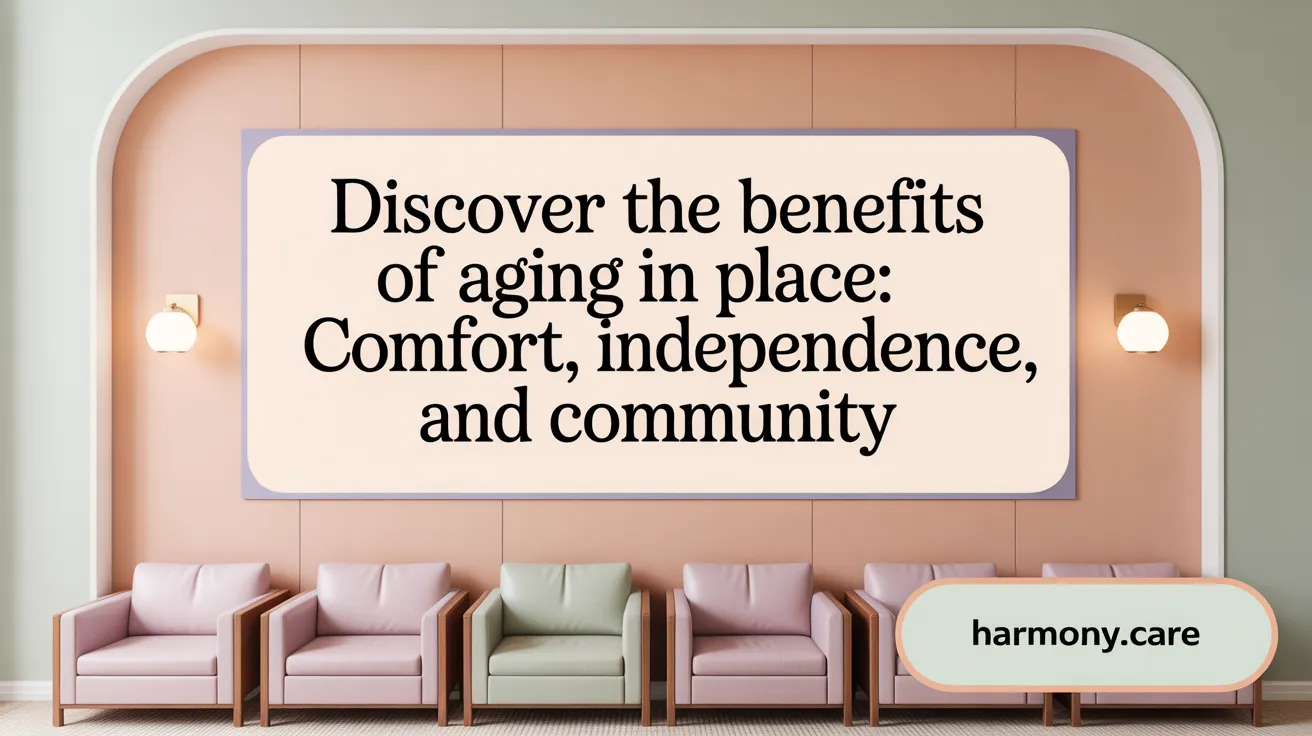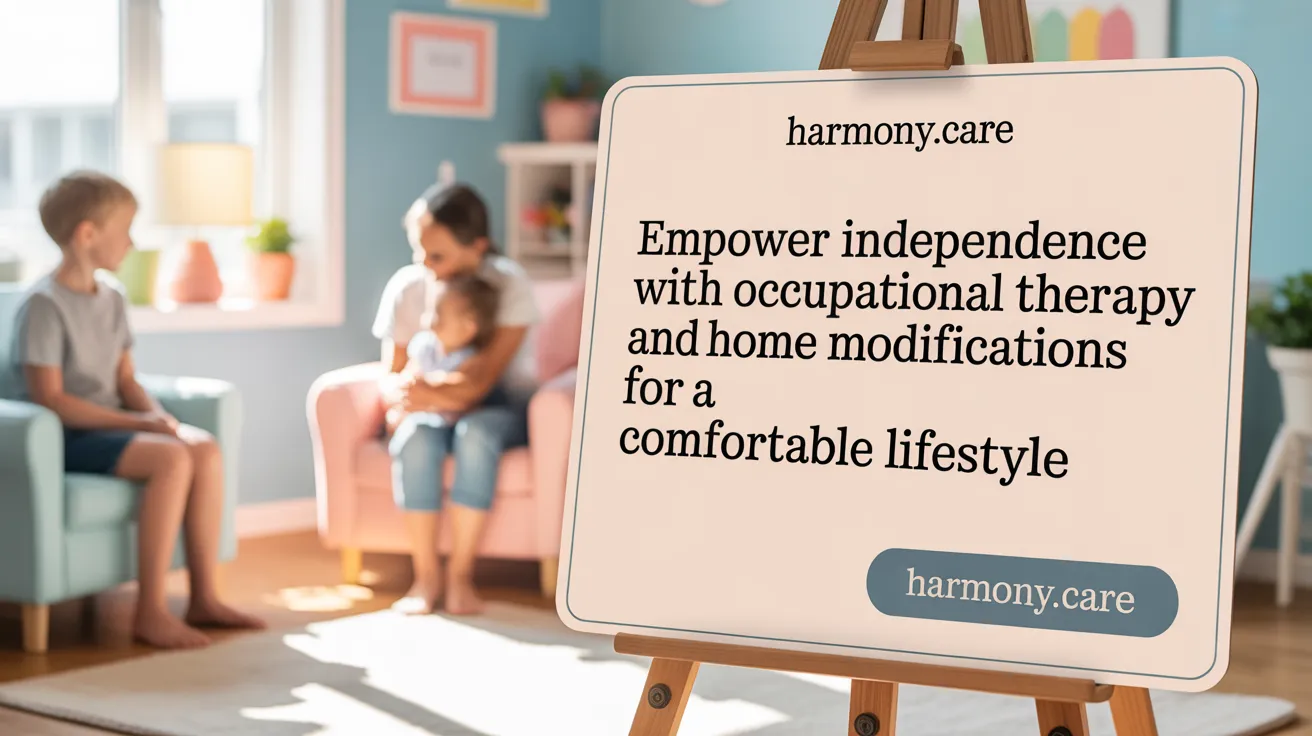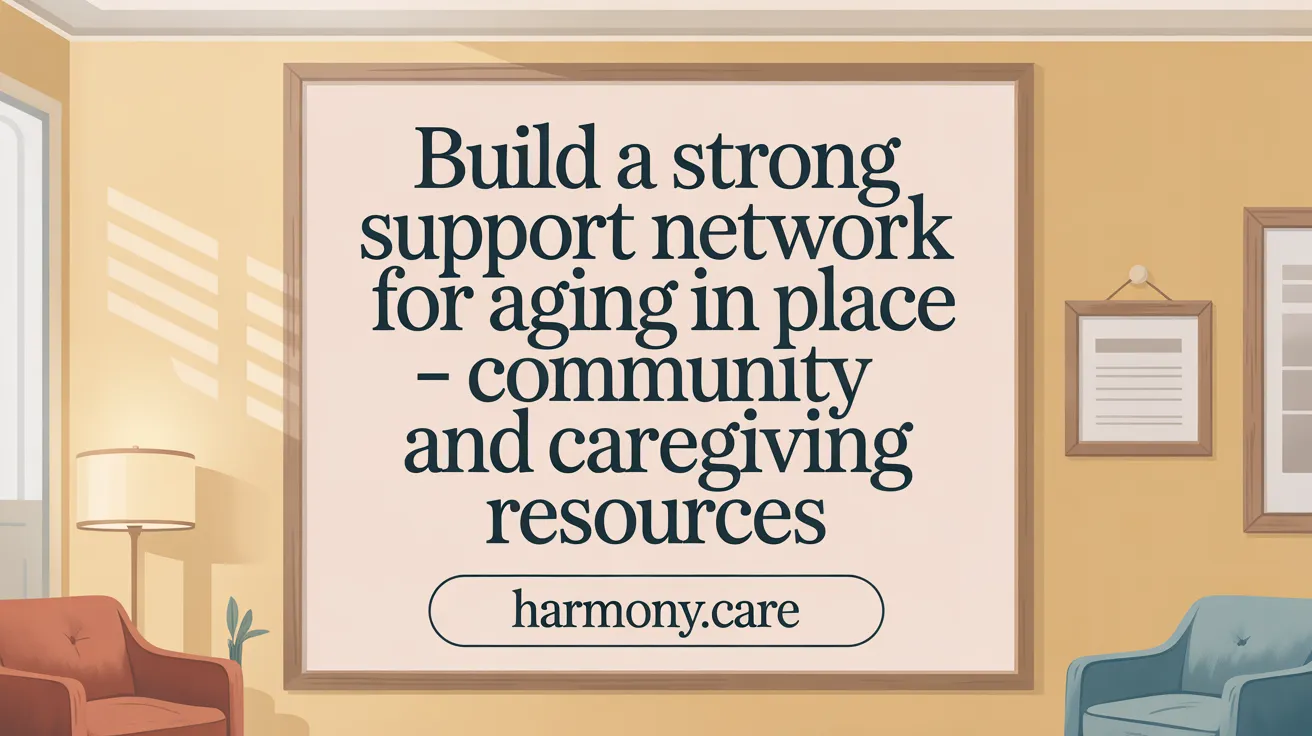Understanding Aging in Place and the Integral Role of In-Home Care
Aging in place is the preferred choice for a vast majority of older adults who wish to maintain independence, comfort, and emotional well-being by living safely in their own homes and communities. In-home care services play a pivotal role in enabling this desire by providing tailored support that addresses both health and daily living needs. This article explores how in-home care supports aging in place goals through medical and non-medical assistance, home adaptations, technological innovations, financial strategies, and community resources.
Defining Aging in Place and Its Benefits

What is aging in place and why is it beneficial?
Aging in place refers to the ability of older adults to live comfortably, safely, and independently in their own homes and communities as they age. This approach allows seniors to stay in familiar surroundings, preserving their routines, social connections, and sense of identity.
One of the main advantages of aging in place is the emotional and social comfort it offers. Remaining in a familiar environment reduces stress and anxiety, promotes mental well-being, and helps prevent feelings of loneliness and social isolation. Access to community resources such as senior centers, social programs, and transportation services further supports social engagement.
From a financial perspective, aging in place can be more cost-effective than institutional care like nursing homes or assisted living facilities. Home modifications—including grab bars, ramps, and improved lighting—alongside support services, can significantly reduce long-term care costs. This is especially true when leveraging programs like grants, Home Equity Conversion Mortgages (HECMs), and insurance coverage.
Overall, aging in place enhances quality of life by fostering independence, supporting emotional health, and maintaining meaningful community involvement. It enables seniors to maintain control over their routines and promotes a sense of autonomy, which is fundamental to dignity and well-being—benefits that resonate both with older adults and society at large.
Comprehensive In-Home Care Services: Meeting Diverse Needs
How does in-home care support aging in place?
In-home care plays a vital role in helping seniors age in place by providing both medical and non-medical services specifically designed to meet their unique needs. Medical support includes skilled nursing, therapies, and health management provided by licensed professionals like nurses and therapists. These services help with managing chronic illnesses, recovering from health issues, and preventing hospital readmissions.
Beyond medical care, non-medical services focus on daily life activities, emotional support, and safety. Assistance with bathing, dressing, meal prep, household chores, transportation, and companionship helps maintain independence and reduces isolation. Additionally, home modifications and assistive devices enhance safety and accessibility, making it easier for seniors to navigate their environment.
Together, these comprehensive services address health, safety, and social needs, allowing older adults to stay in familiar surroundings, retain their autonomy, and enjoy a better quality of life.
What types of services are typically provided by in-home care for seniors?
In-home care for seniors offers a broad spectrum of support tailored to individual preferences and health conditions. Medical services usually include skilled nursing care, medication management, therapy (physical, occupational, speech), wound care, and chronic disease management—all delivered by licensed healthcare providers.
Non-medical services encompass assistance with Activities of Daily Living (ADLs) such as bathing, dressing, grooming, and mobility. Homemaker services like cleaning, laundry, and meal preparation help maintain a safe and comfortable environment. Companionship services reduce social isolation, while transportation support helps seniors attend medical appointments and participate in community activities.
Some programs also incorporate emergency response systems, meal delivery, and caregiver support to bolster safety and independence. Collectively, these diverse services create a holistic support system, enabling seniors to age comfortably and confidently within their own homes.
| Service Type | Examples | Purpose |
|---|---|---|
| Medical care | Nursing, therapy, medication management | Manage health and recover from illness |
| Personal assistance | Bathing, dressing, grooming | Support daily activities |
| Household help | Cleaning, cooking, laundry | Maintain safe, clean home environment |
| Transportation | Medical appointments, errands | Ensure mobility and social participation |
| Companionship | Social visits, cognitive activities | Reduce loneliness and mental decline |
This range of in-home care services underscores the importance of personalized, accessible, and integrated support in enabling seniors to thrive at home.
Home Modifications and Safety Enhancements: Foundations for Independence
What home modifications and safety measures help support aging in place?
Supporting aging in place involves making thoughtful modifications to the home environment to ensure safety, accessibility, and comfort. Common home modifications include installing grab bars and handrails along staircases and in bathrooms to aid stability. Widening doorways and adding ramps can make homes accessible for wheelchair users and those with limited mobility.
Bathroom upgrades, such as walk-in showers and non-slip mats, help prevent falls in high-risk areas. Improving lighting through brighter bulbs and motion sensors, along with using high-contrast color schemes, enhances visibility, making navigation easier for those with visual impairments.
Rearranging furniture to allow clear pathways and eliminate tripping hazards also contributes to safety. Additionally, many seniors benefit from smart safety technology, including medical alert systems and touchless fixtures, which promote independence while providing immediate support in emergencies.
Incorporating these modifications and safety measures creates a safer home environment, supports mobility, and enables older adults to live comfortably and independently for as long as possible.
The Vital Role of Occupational Therapy and Environmental Adaptation

What role does occupational therapy and environmental adaptation play in supporting aging in place?
Occupational therapy is essential for helping older adults stay safe and independent in their own homes. Therapists assess seniors' abilities to perform daily activities such as bathing, dressing, and meal preparation. Based on this assessment, they develop personalized strategies to adapt the living environment and support functional independence.
A significant aspect of occupational therapy involves recommending environmental modifications. These include installing grab bars, widening doorways, adding ramps, and improving lighting—measures that reduce fall hazards and enhance mobility. Such adaptations are tailored to each individual’s needs, allowing seniors to navigate their homes safely and comfortably.
The ProMOTE (Promoting Occupational Therapy and Environmental Modifications for Aging in Place) intervention exemplifies an effective, structured approach. It is a theory-based program that combines assessments with targeted home modifications and therapy sessions. Results from studies demonstrate improvements in functional performance, increased social participation, and better adherence to safety recommendations.
Beyond physical adjustments, occupational therapists also address cognitive and emotional challenges faced by seniors. They help maintain routines, provide cognitive exercises, and promote social engagement. These efforts contribute significantly to emotional well-being and help prevent social isolation.
In summary, occupational therapy and environmental adaptation are central to empowering older adults. Personalized assessments and modifications allow seniors to maintain independence, safety, and a high quality of life, making aging in place a feasible goal for many.
Technological Innovations Enhancing Safety and Independence

How can technology enable seniors to remain independent and safe at home?
Technology plays a vital role in supporting seniors living independently by providing innovative solutions that enhance safety, health management, and social engagement.
Smart home devices are designed to make daily living easier and safer. Automated lighting systems can prevent falls by illuminating pathways during nighttime, while security cameras and doorbell cameras allow seniors to monitor their surroundings remotely. Voice-activated assistants like Amazon Alexa or Google Home enable seniors to control appliances, set reminders, and call for help hands-free.
Remote health monitoring through wearable sensors and devices helps track vital signs such as heart rate, blood pressure, and oxygen levels. These tools allow healthcare providers and caregivers to monitor health status in real-time, facilitating early detection of health issues and reducing emergency hospital visits.
Telehealth applications offer convenient access to medical consultations via video calls, enabling seniors to receive care without leaving their homes. This technology is especially useful for ongoing management of chronic conditions and medication adherence.
Assistive technology has advanced to include medication dispensers that organize doses and alert users when to take medications, mobility aids like walkers with built-in sensors, and fall detection devices that automatically alert caregivers or emergency services if a fall occurs.
Social connectivity tools, such as video communication platforms and transportation scheduling apps, help seniors stay connected with family and friends. These tools combat loneliness, encourage social participation, and promote mental health.
Overall, embracing these technological solutions creates a safer living environment, supports health, and fosters independence, helping older adults to age comfortably in their own homes.
Financial Planning and Healthcare Coverage for In-Home Care
When preparing to age in place, understanding financial considerations and healthcare coverage options is vital. In-home care costs can vary significantly depending on location, the level of support needed, and specific services such as personal assistance, medical support, and home modifications.
Medicare typically covers short-term skilled nursing, medical visits, and home health services that are ordered by a healthcare provider following hospitalization. However, its coverage is limited in duration and scope, so it often does not include ongoing personal care or long-term assistance.
Medicaid is a critical resource for many low-income seniors, offering support for long-term care. Eligibility depends on income and assets, and benefits may include home-based services that help seniors remain at home, such as personal care aides and home modifications.
Private insurance options, especially long-term care insurance, can provide significant coverage for extended assistance. Purchasing a policy early, before health declines, makes premiums more affordable and coverage more comprehensive.
Additionally, government programs such as veteran benefits (VA aid and attendance benefits) and state-specific support initiatives can also help offset costs. These programs often require application processes but can be substantial sources of financial aid.
Effective financial planning for in-home care involves assessing all potential expense sources, understanding which services will be covered by insurance or government programs, and exploring available resources. Consulting with financial planners, insurance specialists, and social workers ensures that funding strategies align with individual health needs and financial situations. Planning ahead helps ensure that seniors can enjoy aging in place securely without overwhelming financial burdens.
Harnessing Support Systems and Community Resources

What support systems and community resources facilitate successful aging in place?
Supporting aging in place requires a network of resources that directly or indirectly help seniors maintain their independence and quality of life. Informal caregivers—such as family members, friends, and neighbors—play a vital role by providing daily personal assistance, emotional support, and companionship. These individuals help with activities like dressing, meal preparation, and transportation, fostering a sense of connectedness and trust.
Beyond family and friends, formal services are essential. Home healthcare providers offer medical and non-medical support, including skilled nursing, therapy, and household chores. Support for safety through home modifications—installing grab bars, improving lighting, and removing hazards—further ensures security.
Community programs also contribute significantly. Senior centers, adult day care, and meal delivery services like Meals on Wheels provide social interaction, nutritional support, and daytime care. Transportation services extend mobility, allowing seniors to attend appointments, shop, or participate in social activities.
Emergency preparedness and ongoing planning are supported by geriatric care managers and organizations such as Area Agencies on Aging. These professionals coordinate health services, assess needs, and develop personalized care plans.
Government-funded programs underpin many of these services. Medicare and Medicaid help cover home health visits and support, while the Older Americans Act funds community-based programs aimed at promoting independence.
Collectively, these resources create a comprehensive support network, vital for enabling older adults to age in place safely, comfortably, and with dignity.
Planning and Strategies for Achieving Aging in Place
What strategies can individuals and communities implement to support aging in place?
Supporting aging in place requires a combination of proactive planning, appropriate modifications, and community resources. At the individual level, making home safety improvements is essential. Installing grab bars, improving lighting, and removing fall hazards can significantly reduce injury risks. Regular assessment of health and mobility needs helps in adjusting support services accordingly.
Planning ahead also involves engaging healthcare providers and professionals like geriatric care managers. These experts assist in developing personalized care plans, coordinating medical and support services, and ensuring that the home environment remains safe as needs evolve.
Communities play a vital role by providing accessible public resources. Senior centers, transportation services, meal delivery programs, and social activities help seniors stay connected and independent. Support from family, friends, neighbors, and community organizations fosters a supportive environment. Technology further enhances safety and communication: emergency alert systems, telehealth services, and reminder devices enable prompt assistance and ongoing health monitoring.
In summary, successful aging in place combines environmental modifications, strategic health planning, community involvement, and technological tools. This integrated approach helps seniors maintain autonomy, security, and quality of life in their familiar surroundings.
Educational Resources Supporting Seniors and Families

What education and resources are available for seniors and families about aging in place options?
There is a variety of educational materials and programs designed to help seniors and their families understand and plan for aging in place. Organizations like AARP, the California Department of Aging, and the Alzheimer's Association provide comprehensive guides on making homes safer through modifications, evaluating current needs, and understanding future health considerations.
Community workshops, online articles, and caregiver support programs offer practical advice on topics such as home safety assessments, legal planning, and accessing community-based services. These services include personal care, meal delivery, transportation, and health care support tailored to individual needs.
Further, federal and state agencies promote awareness through research reports, advocacy efforts, and policy initiatives focused on supporting aging in place. Resources like volunteer programs, emergency alert systems, and geriatric care management services aid seniors in maintaining independence. These tools help older adults stay connected to community resources, ensuring they can age comfortably and safely in their familiar environment.
Overall, access to these educational resources empowers seniors and families to make informed decisions, plan effectively, and utilize available support systems to foster a secure and satisfying aging-in-place experience.
The Emotional and Social Importance of In-Home Care
How does companionship benefit seniors aging in place?
Companionship provided by caregivers and community programs plays a significant role in supporting seniors’ emotional health. Regular social interactions help prevent feelings of loneliness and isolation, which are common concerns among older adults living alone. These interactions not only uplift mood but also create opportunities for meaningful engagement.
What role does cognitive stimulation play?
Cognitive activities like puzzles, memory exercises, or social conversations stimulate the brain and help slow cognitive decline. In-home care providers often include cognitive stimulation in their routines, which can improve mental alertness and overall cognitive health, contributing to a more autonomous and engaged lifestyle.
How does reducing loneliness impact overall health?
Loneliness is linked to higher risks of depression, cardiovascular issues, and even mortality. In-home care that emphasizes social connection helps reduce these risks by providing consistent companionship and opportunities for social participation.
What is family involvement’s significance?
Family members staying involved in care planning and visits foster emotional closeness and trust. This involvement reassures seniors and enhances the quality of care, offering emotional support alongside physical assistance.
What are the mental health benefits of aging in place?
Remaining in a familiar environment supports emotional stability and independence. In-home care services that include social activities, emotional support, and cognitive engagement contribute to higher mental health and life satisfaction. These elements collectively promote dignity, comfort, and a sense of belonging, vital for a thriving aging experience.
| Aspect | Benefit | Supporting Details |
|---|---|---|
| Companionship | Reduces loneliness | Regular social interactions improve mood and mental health |
| Cognitive Stimulation | Maintains mental agility | Engaging activities stimulate cognition and delay decline |
| Family Engagement | Builds trust and reassurance | Family involvement supports emotional well-being |
| Mental Health Support | Enhances overall happiness | Familiar environment fosters stability and confidence |
Fostering Independence and Well-Being Through In-Home Care
In-home care is a vital cornerstone for enabling seniors to age in place safely, comfortably, and with dignity. By combining personalized medical and non-medical services, implementing thoughtful home modifications, leveraging technology, and utilizing community support systems, seniors can maintain their independence and quality of life. Effective financial planning and access to education further empower both seniors and their families to make informed decisions. Ultimately, in-home care supports not only physical health but also emotional well-being and social connection, underscoring aging in place as a holistic approach that benefits individuals and communities alike.
References
- Aging in Place: Growing Older at Home
- How Home Care Services Promote Aging in Place - Ultimate Care NY
- How Home Health Care Supports Aging in Place
- Aging in Place: Are We Prepared? - PMC - PubMed Central
- The Role of Home Health Care in Aging in Place - 360 SHS
- The Benefits of Aging in Place - CareScout
- How In-Home Care Services Help Seniors - Oasis Senior Advisors
- Aging in Place: Resources to Living at Home For as Long As Possible
